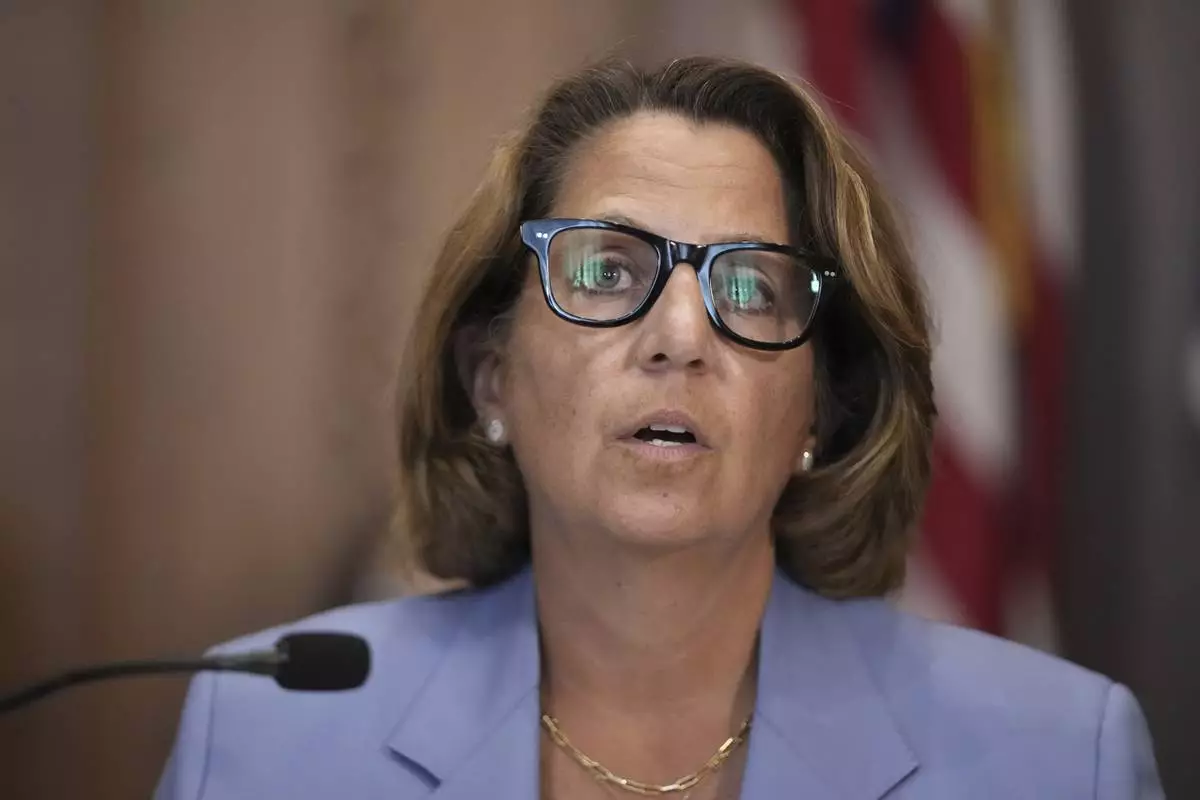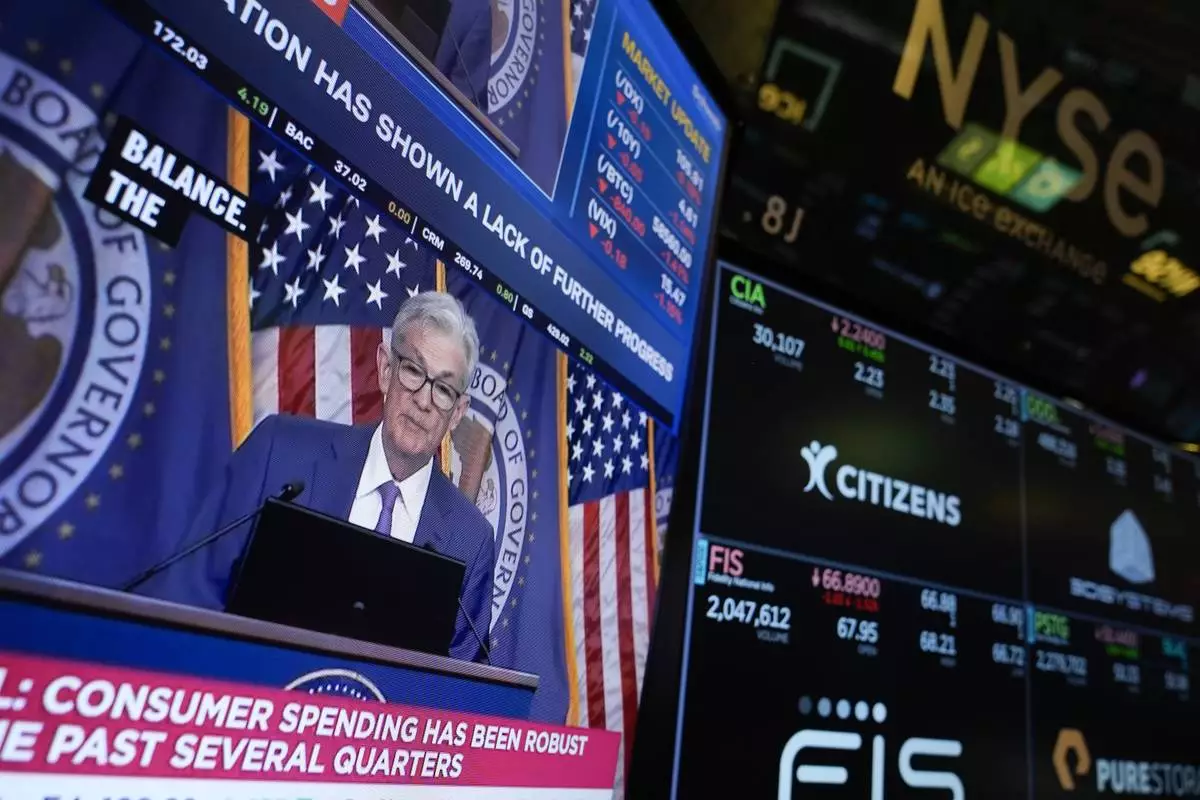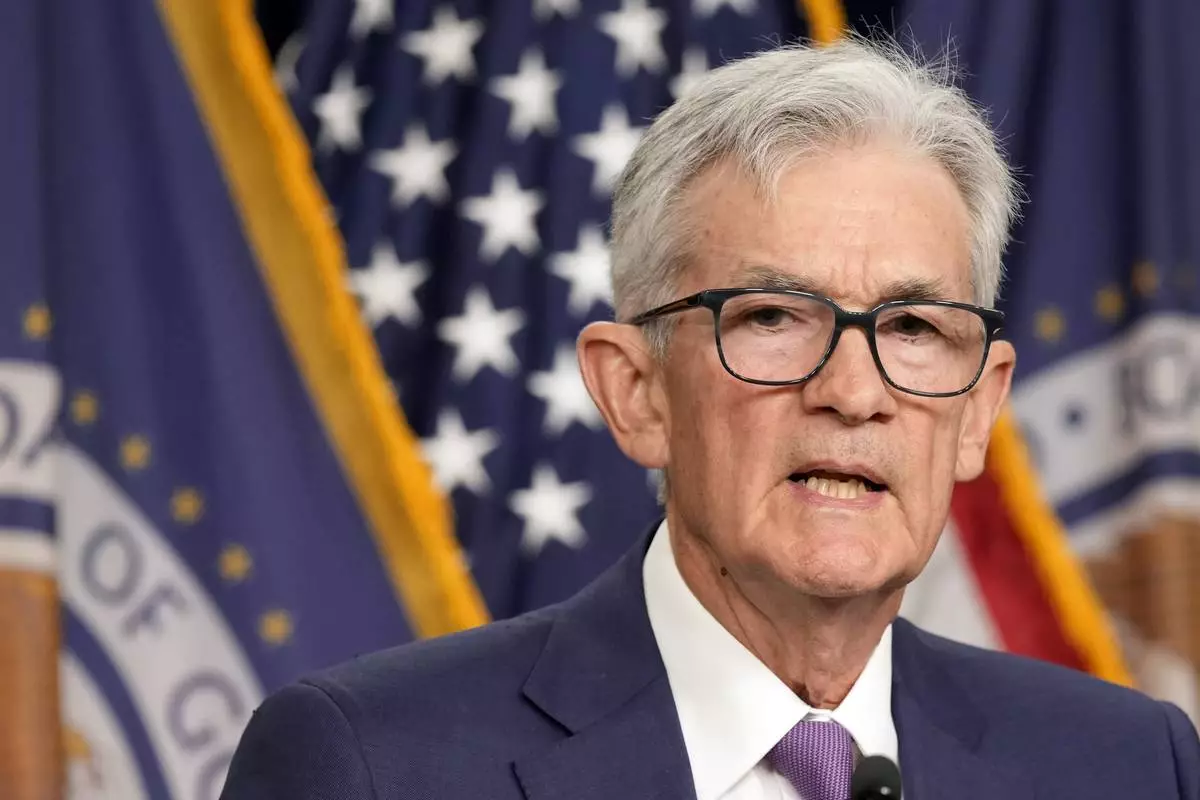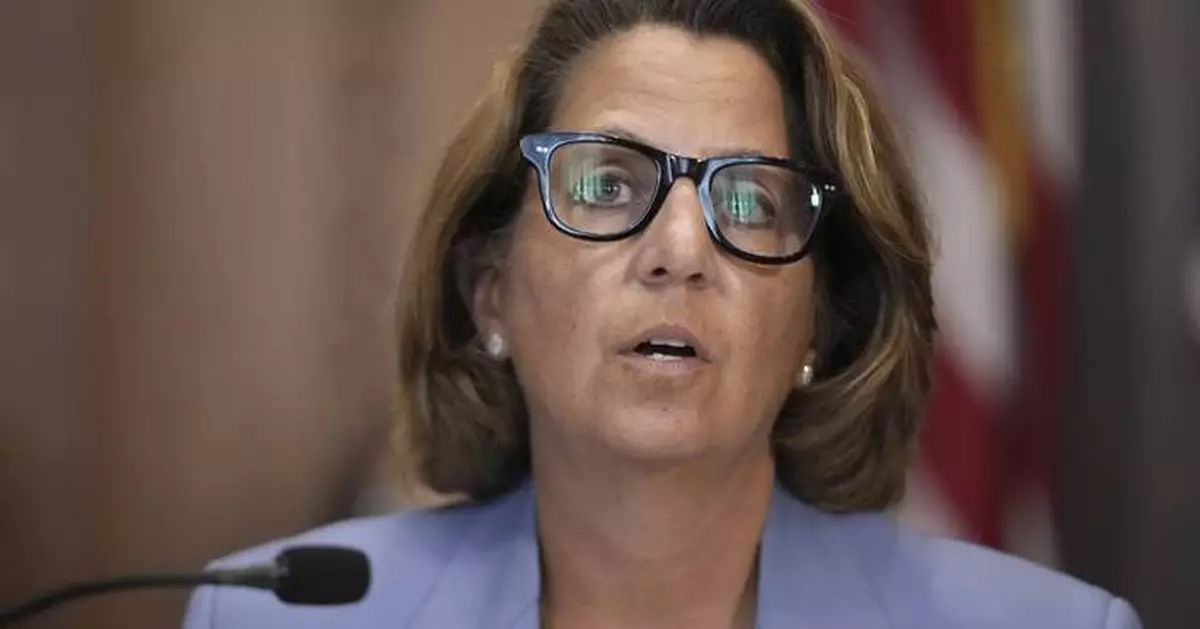WASHINGTON (AP) — Justice Department officials are turning to the 3D-printing industry to help stop the proliferation of tiny pieces of plastic transforming weapons into illegal homemade machine guns on streets across America.
The rising threat of what are known as machine gun conversion devices requires “immediate and sustained attention," U.S. Deputy Attorney General Lisa Monaco said Friday. That means finding ways to stop criminals from exploiting technology to make the devices in the first place, she said.
“Law enforcement cannot do this alone,” Monaco said during a gathering in Washington of federal law enforcement officials, members of the 3D-printing industry and academia. “We need to engage software developers, technology experts and leaders in the 3-D-printing industry to identify solutions in this fight.”
Devices that convert firearms to fully automatic weapons have spread “like wildfire” due to advancements in 3D-printing technology, according to Steve Dettelbach, the director of the Bureau of Alcohol, Tobacco, Firearms and Explosives. His agency reported a 570% increase in the number of conversion devices collected by police departments between 2017 and 2021.
“More and more of these devices were being sold over the internet and on social media, and more and more they were actually just being printed by inexpensive 3D printers in homes and garages everywhere,” Dettelbach said.
The pieces of plastic or metal are considered illegal machine guns under federal law but are so small they run the risk of being undetected by law enforcement. Guns with conversion devices have been used in several mass shootings, including one that left four dead at a sweet sixteen party in Alabama last year.
The devices “can transform a street corner into a combat zone, devastating entire communities,” Monaco said.
Monaco on Friday also announced several other efforts designed to crack down on the devices, including a national training initiative for law enforcement and prosecutors. The deputy attorney general is also launching a committee designed to help spot trends and gather intelligence.

Deputy Attorney General Lisa Monaco speaks during a meeting of the Justice Department's Election Threats Task Force at the Department of Justice, Wednesday, Sept. 4, 2024, in Washington. (AP Photo/Mark Schiefelbein)
WASHINGTON (AP) — American consumers and home buyers, business people and political leaders have been waiting for months for what the Federal Reserve is poised to announce this week: That it's cutting its key interest rate from a two-decade peak.
It's likely to be just the first in a series of rate cuts that should make borrowing more affordable now that the Fed has deemed high inflation to be all but defeated.
Consider Kelly Mardis, who owns Marcel Painting in Tempe, Arizona. About a quarter of Mardis' business comes from real estate agents who are prepping homes for sale or from new home buyers. Customer queries, he recalls, quickly dropped almost as soon as the Fed started jacking up interest rates in March 2022 — and then kept raising rates through July 2023.
As the housing market contracted, Mardis had to lay off about half his staff of 30. It was the worst dry spell he had experienced in 14 years.
After the Fed begins cutting rates on Wednesday, Mardis envisions brighter times ahead. Typically, a succession of Fed rate cuts leads over time to lower borrowing costs for things like mortgages, auto loans, credit cards and business loans.
“I'm 100% sure it would make a difference,” Mardis said. “I'm looking forward to it.”
At the same time, plenty of uncertainty still surrounds this week's Fed meeting.
How much will the policymakers decide to reduce their benchmark rate, now at 5.3%? By a traditional quarter-point or by an unusually large half-point?
Will they keep loosening credit at their subsequent meetings in November and December and into 2025? Will lower borrowing costs take effect in time to bolster an economy that is still growing at a solid pace but is clearly showing cracks?
Chair Jerome Powell emphasized in a speech last month in Jackson Hole, Wyoming, that the Fed is prepared to cut rates to support the job market and achieve a notoriously difficult “soft landing.” That is when the central bank manages to curb inflation without tipping the economy into a steep recession and causing unemployment to surge.
It's not entirely clear that the Fed can pull it off.
One hopeful sign is that as Powell and other Fed officials have signaled that rate cuts are coming, many interest rates have already fallen in anticipation. The average 30-year mortgage rate dropped to 6.2% last week — the lowest level in about 18 months and down from a peak of nearly 7.8%, according to the mortgage giant Freddie Mac. Other rates, like the yield on the five-year Treasury note, which influences auto loan rates, have also tumbled.
“That really does help lower those borrowing costs across the board," said Kathy Bostjancic, chief economist at Nationwide Financial. “That helps to give nice relief to consumers.”
Businesses can now borrow at lower rates than they've been able to for the past year or so, potentially boosting their investment spending.
“The question is if it's helping quickly enough ... to actually deliver the soft landing that everyone's been hoping for," said Gennadiy Goldberg, head of U.S. rates strategy at TD Securities.
Many economists would like to see the Fed announce a half-point rate cut this week, in part because they think the officials should have begun cutting rates at their previous meeting in July. Wall Street traders on Friday signaled their expectation that the Fed will carry out at least two half-point cuts by year's end, according to futures prices.
Yet Goldberg suggested that there would be downsides to implementing a half-point rate cut this week. It might signal to the markets that the Fed's policymakers are more worried about the economy than they actually are.
“Markets could assume that something is wrong and the Fed sees something quite terrible on the horizon,” Goldberg said.
It could also raise expectations for additional half-point cuts that the Fed might not deliver.
In the long run, more important than Wednesday's Fed action is the pace of rate cuts through next year and the ultimate end point. If Fed officials conclude that inflation is essentially defeated and they no longer need to slow the economy, that would suggest that their key rate should be at a more “neutral” setting, which could be as low as 3%. That would require a series of further rate cuts.
Many economists think the economy needs much lower rates. Diane Swonk, chief economist at KPMG, notes that hiring has averaged just 116,000 a month for the past three months, a level equivalent to the sluggish job growth coming out of the 2008-2009 Great Recession. The unemployment rate has risen by nearly a full percentage point to 4.2%.
“There is a fragility out there when you are not hiring at a very strong pace," Swonk said. “This is still a much weaker labor market then we thought we had.”
Still, Fed rate cuts may provide a crucial boost to the economy just when it's needed.
Michele Raneri, head of U.S. research at TransUnion, a credit monitoring company, noted that lower rates typically lead consumers to refinance high interest-rate debt — principally credit card borrowing — into lower-cost personal loans. Doing so would ease their financial burdens.
And once mortgage rates fall below 6%, Raneri said, more homeowners will likely be willing to sell, rather than holding on to their house out of reluctance to swap a low mortgage rate for a much higher one. More home sales would help relieve the supply crunch that's made it hard for younger people to buy a first home.
“That starts to break up this logjam that we’ve been in where there’s a low inventory of houses,” Raneri said. “We need some people to start moving to start that churn.”
Other small businesses are seeing signs that the churn is picking up. Brittany Hart, who owns a software consulting firm in Phoenix that works with mortgage brokers, wealth managers and banks, is noticing more interest from potential clients in adopting new software to boost efficiency. That is because they expect the housing market to pick up.
Hart has started looking for three new employees to help handle the expected business, to add to the roughly 20 employees she has now.
“This is the first leading indicator that we are getting back to that normal activity in the housing market," she said.

FILE - A screen displays a news conference with Federal Reserve Chairman Jerome Powell on the floor at the New York Stock Exchange in New York, May 1, 2024. (AP Photo/Seth Wenig, File)

FILE - Federal Reserve Chair Jerome Powell speaks during a news conference at the Federal Reserve in Washington, May 1, 2024. (AP Photo/Susan Walsh, File)












